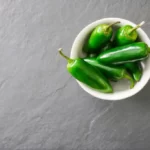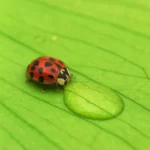Coral bells, also known by their botanical name Heuchera, have become a favorite in the gardening world, known for their striking foliage and versatility in landscaping. These vibrant plants add a splash of color and elegance to gardens, making them a cherished choice for garden enthusiasts. However, in the midst of their beauty, a common question arises among dog owners: Are coral bells toxic to dogs? In this article, we dive into the world of garden plants and explore the potential risks and precautions concerning coral bells and our four-legged companions. Understanding the potential toxicity of these plants is vital to ensure the safety and well-being of our beloved pets.
Coral Bells: An Overview
Before addressing the potential toxicity of coral bells to dogs, let’s get acquainted with these captivating plants:
- Botanical Marvels: Coral bells, scientifically known as Heuchera, belong to a genus of perennial plants admired for their exceptional foliage. These plants are characterized by their heart-shaped or lobed leaves, which come in a wide range of colors, including shades of green, purple, bronze, and silver.
- Garden Versatility: Coral bells are celebrated for their versatility in gardens and landscaping. They are well-suited to a variety of climates and can be used as ground covers, border plants, or container specimens. The elegant leaves of coral bells add a unique and visually appealing element to outdoor spaces.
Potential Toxicity of Coral Bells
Now, let’s delve into the potential toxicity of coral bells to dogs:
- Toxic Components: Coral bells contain saponins, which are natural compounds found in various plant species. While saponins are generally not highly toxic to dogs, they can cause mild gastrointestinal upset if ingested in significant quantities. These compounds may lead to symptoms such as drooling, vomiting, and diarrhea.
- Low Poisoning Risk: The overall level of toxicity in coral bells is relatively low for dogs. These plants are not known to be highly poisonous, and most dogs are unlikely to consume large quantities of coral bell foliage due to their bitter taste.
- Individual Sensitivity: It’s important to consider that the severity of symptoms can vary depending on the individual dog’s sensitivity and the quantity ingested. While the risk of severe poisoning from coral bells is considered low, any signs of distress should be taken seriously, and a veterinarian should be consulted.
By being aware of the potential toxicity of coral bells and recognizing the possible signs of ingestion or poisoning, dog owners can take necessary precautions to ensure their pets’ safety while enjoying the charm of these garden plants. In the following sections, we will explore the signs of ingestion and poisoning in dogs and provide valuable precautions for dog owners to consider.
Signs of Ingestion and Poisoning in Dogs
While coral bells are generally considered to have low toxicity to dogs, it’s crucial to recognize the signs of potential ingestion and poisoning in case your canine companion decides to explore these plants:
- Gastrointestinal Upset: One of the most common signs is gastrointestinal distress. This can include symptoms like vomiting, diarrhea, and drooling. If your dog has ingested coral bell leaves or other parts of the plant, you may notice these signs of irritation in their digestive system.
- Loss of Appetite: Dogs that have consumed coral bells may experience a temporary loss of appetite. This could be due to the unpleasant taste and the digestive discomfort caused by the plant.
- Lethargy: Your dog may appear lethargic or less active than usual if they’ve ingested coral bells. This is often a general response to discomfort or nausea.
It’s important to keep in mind that the severity of symptoms can vary depending on the quantity ingested and the individual dog’s sensitivity. While cases of severe poisoning from coral bells are rare, any signs of distress should be taken seriously, and you should contact your veterinarian for guidance.
Precautions for Dog Owners
To ensure the well-being of your furry friends and minimize the risk of any potential issues related to coral bells, here are some precautions for dog owners:
- Awareness: Educate yourself about the specific coral bell varieties in your garden and their potential irritants. Some cultivars may have higher levels of saponins than others.
- Monitor Your Dog: Keep a close eye on your dog while they are in the garden. Dogs are naturally curious, and they might be inclined to nibble on plants. Training them to avoid specific plants, including coral bells, can be a helpful preventive measure.
- Limit Access: If you have concerns about your dog’s interaction with coral bells, consider fencing off the area or planting them in a location that’s less accessible to your pets.
- Diversify Your Garden: To provide a safe environment for your dogs and encourage biodiversity in your garden, consider planting a variety of non-toxic and pet-friendly plants that won’t pose risks to your pets.
- Consult Your Veterinarian: If you suspect that your dog has ingested a significant amount of coral bells or is displaying symptoms of distress, contact your veterinarian immediately. They can provide guidance and treatment as needed.
In conclusion, while the potential toxicity of coral bells to dogs is generally low, it’s essential for dog owners to be aware of the risks and take appropriate precautions. By monitoring your dogs in the garden, training them to avoid certain plants, and diversifying your garden with non-toxic options, you can create a safe and enjoyable outdoor space for both your pets and the plant enthusiasts. If any concerns arise, don’t hesitate to seek advice from your veterinarian to ensure the well-being of your beloved canine companions.
Safer Alternatives for Dog-Friendly Gardens
To strike a harmonious balance between a beautiful garden and the safety of your canine companions, consider these safer alternatives to plant in dog-friendly gardens:
- Aster: Aster is a charming, non-toxic flower that adds a burst of color to your garden and attracts pollinators.
- Zinnia: These vibrant and non-toxic annual flowers are excellent for adding color to your garden, and they are safe for your dogs to be around.
- Bee Balm: Bee balm, also known as Monarda, is a safe and attractive option that will not pose risks to your pets and will also attract bees and butterflies.
- Calendula: Calendula, often called marigold, is a safe and colorful addition to your garden that adds beauty without concerns for your dogs.
- Snapdragon: Snapdragons are known for their distinctive appearance and are non-toxic to dogs, making them an excellent choice for pet-friendly gardens.
- Native Plants: Consider native plants that are adapted to your region, as they often thrive and attract wildlife without posing significant risks to pets.
By incorporating these dog-friendly options into your garden, you can create a safe and enjoyable environment for both your dogs and the local wildlife.
Conclusion
Coral bells, with their striking foliage and versatility, can be an appealing addition to your garden. While the potential toxicity of these plants to dogs is generally low, it’s vital for dog owners to be informed about the risks and take appropriate precautions. By recognizing the signs of potential ingestion or poisoning and implementing protective measures, you can create a garden that is both visually appealing and safe for your beloved canine companions.
Moreover, by exploring alternative plants that are non-toxic and pet-friendly, you can strike a balance between the aesthetics of your garden and the well-being of your dogs. Remember that a thriving garden should be a place of enjoyment and safety, not only for your pets but for the entire family. Create a harmonious outdoor space where your dogs can roam freely, and you can enjoy the beauty of nature, knowing that you’ve made choices that prioritize both the aesthetics and the safety of your garden.



